Home>Dining>Events & Etiquette>How To Host A Dinner Party


Events & Etiquette
How To Host A Dinner Party
Modified: January 11, 2024
Learn the essentials of event planning and etiquette to successfully host a dinner party. Discover expert tips and tricks to make your guests feel welcome and create a memorable event.
(Many of the links in this article redirect to a specific reviewed product. Your purchase of these products through affiliate links helps to generate commission for Storables.com, at no extra cost. Learn more)
Introduction
Welcome to the world of hosting a dinner party, where delicious food, delightful company, and gracious hosting skills come together to create an unforgettable evening. Whether you’re a seasoned host or a complete beginner, this comprehensive guide is here to help you navigate the intricacies of planning and executing the perfect dinner party.
Hosting a dinner party is not just about providing a meal; it is about creating an experience that brings people together in a warm and inviting atmosphere. It is an opportunity to showcase your culinary skills, exercise your creativity in decor, and create lasting memories with friends and family.
In this article, we will break down the key steps involved in planning and hosting a successful dinner party. From choosing a theme and creating a guest list, to menu planning, table setting, and entertaining activities, we’ll cover everything you need to know to ensure your event is a resounding success.
Hosting a dinner party is an art form that combines organization, creativity, and an adherence to proper etiquette. Along the way, we’ll provide tips and insights into the finer points of hosting, including how to send out invitations, where to shop for the freshest ingredients, and how to create a harmonious ambiance that will impress your guests.
Whether you’re hosting an intimate gathering for close friends or planning a grand celebration for a special occasion, the steps in this guide will help you navigate through the complexities of hosting with ease and confidence. By the end, you’ll have all the tools and knowledge necessary to plan and execute a dinner party that will leave your guests raving and eagerly anticipating your next soirée.
So, get ready to embark on a culinary adventure and let your inner host shine as we dive into the world of dinner party planning and etiquette!
Key Takeaways:
- Hosting a successful dinner party involves careful planning, attention to detail, and a personal touch. From theme selection to serving the meal, creating a warm and inviting atmosphere ensures a memorable experience for guests.
- Gracious farewells, thoughtful gestures, and post-party reflections are essential for concluding a dinner party on a high note. Embracing the memories created and learning from the experience sets the stage for future hosting endeavors.
Read more: How To Host A Dinner Party In A Small Space
Choosing a Theme
One of the most exciting aspects of hosting a dinner party is choosing a theme that sets the tone and creates a cohesive experience for your guests. A theme can range from a specific cuisine, such as Italian or Mexican, to a particular era, like the Roaring Twenties or a tropical luau. The theme sets the stage for the entire event, influencing everything from the menu and decor to the dress code.
When selecting a theme, consider the occasion and your guests’ preferences. Is it a formal celebration or a casual gathering of friends? Are your guests adventurous foodies or more traditional in their culinary tastes? Tailoring the theme to the occasion and your audience will ensure that everyone can fully enjoy and engage with the experience.
Once you’ve determined the general direction, brainstorm ideas to further refine your theme. Consider elements such as color schemes, music, and cultural references that can enhance the ambiance and immerse your guests in the theme. For example, if you decide on an Italian theme, you can incorporate red, green, and white decorations, play Italian music in the background, and even encourage guests to dress in their finest Italian-inspired outfits. Additionally, to add a unique touch, you can even make custom wine glasses that complement this theme, enhancing the overall experience for your guests.
Remember, the theme should be the guiding principle for all aspects of your dinner party, including the menu. Let it inspire your choice of dishes and ingredients. If you’re hosting a Mexican-themed evening, you might serve classics like guacamole and tacos, or even venture into lesser-known regional specialties to surprise and delight your guests.
Choosing a theme adds an element of excitement and anticipation to your dinner party. It allows you to unleash your creativity and infuse your own personality into the event. Be sure to make guests aware of the theme when sending out invitations, providing them with a glimpse of the experience they can expect and allowing them to prepare accordingly.
In the next sections, we’ll delve into specific details of planning and hosting a dinner party, including creating the guest list, sending out invitations, menu planning, decorating the space, and more. By the end of this guide, you’ll have all the tools and knowledge necessary to host an unforgettable dinner party that leaves your guests eagerly anticipating your next invitation.
Guest List
The guest list is an essential component of any dinner party. It sets the tone for the event and determines the dynamics and atmosphere throughout the evening. When creating your guest list, there are several factors to consider to ensure a successful and enjoyable gathering.
First and foremost, consider the size of your space. How many people can comfortably fit in your dining area? It’s important to strike a balance between an intimate gathering and overcrowding the space. You want your guests to feel comfortable and have enough room to move around and engage in conversation.
Next, consider the relationship dynamics among your potential guests. Are they all close friends or a mix of acquaintances? Are there any potential conflicts? Hosting a dinner party is about creating a harmonious environment, so it’s crucial to invite guests who will get along and enjoy each other’s company.
Additionally, think about the diversity of your guest list. A mix of ages, backgrounds, and interests can lead to engaging conversations and a vibrant atmosphere. Consider inviting people from different social circles or introducing friends to each other who have common interests.
When deciding on the number of guests, keep in mind your ability to cater to everyone’s needs. Will you be able to cook for a large group? Can you accommodate dietary restrictions or preferences? Ensuring that you can provide a satisfying dining experience for each guest is essential.
Lastly, think about the purpose of your dinner party. Is it a casual get-together to enjoy good food and company? Or is it a celebration for a special occasion? Tailoring your guest list to align with the purpose can enhance the overall experience for everyone involved.
Remember, the guest list plays a significant role in determining the success of your dinner party. Thoughtful consideration of the size, dynamics, diversity, and purpose of your gathering will help create a welcoming atmosphere where your guests feel comfortable, engaged, and ready to enjoy a memorable evening.
Now that you have the foundation of your guest list, it’s time to move on to the next step: sending out invitations. In the following section, we’ll discuss different methods of inviting your guests and provide tips for ensuring a timely and organized response.
Invitations
The invitation sets the tone for your dinner party and provides essential details to your guests. Whether you choose traditional printed invitations or opt for electronic invitations, it’s crucial to ensure that they are clear, informative, and convey the spirit of your event.
If you prefer a more formal approach, printed invitations are a classic choice. Select design elements that align with your chosen theme and include all the necessary information, such as the date, time, location, and any special instructions or requests. Handwritten addresses and personalized messages add a thoughtful touch.
For a more modern and eco-friendly option, electronic invitations are becoming increasingly popular. Platforms like Evite or Paperless Post offer a wide range of stylish templates that can be customized to suit your theme. They also provide the convenience of easily tracking RSVPs and sending updates to your guests.
When crafting your invitations, consider the importance of clear communication. Be specific about the dress code, whether it’s formal, casual, or themed attire. If you’re requesting your guests to bring something, such as a bottle of wine or a dessert, make sure to mention it clearly in the invitation.
It’s also a good idea to include an RSVP date and contact information for guests to reply. This allows you to plan and prepare accordingly, ensuring you have enough food and seating for everyone. As the event approaches, you may want to follow up with any guests who haven’t responded to ensure an accurate headcount.
Lastly, remember to be considerate of your guests’ time and respond promptly to any inquiries or requests they may have. This level of responsiveness and attentiveness will contribute to a positive guest experience and a sense of anticipation leading up to your dinner party.
Now that your invitations are ready to be sent, it’s time to move on to the next phase: planning the menu. In the following section, we’ll delve into the details of creating a delicious and well-balanced menu that will impress your guests and leave them eager to taste your culinary creations.
Menu Planning
Menu planning is a crucial aspect of any dinner party, as it sets the stage for the culinary experience you will be providing your guests. Your menu should reflect your theme, cater to dietary restrictions or preferences, and showcase your culinary skills.
Start by considering the overall structure of your menu. Aim for a well-balanced combination of appetizers, main courses, side dishes, and desserts. Select dishes that complement each other in flavors, textures, and presentation.
If you’re hosting a themed dinner party, incorporate dishes that are traditional or representative of that cuisine or era. For example, if you’re hosting an Italian-themed dinner party, consider serving classic dishes like bruschetta, pasta, and tiramisu.
When planning your menu, it’s essential to take into account any dietary restrictions or preferences of your guests. Ensure there are options available for vegetarian, vegan, gluten-free, or other specific dietary needs. Offering a variety of choices ensures that everyone can enjoy a satisfying meal.
Consider the complexity of the dishes you’re planning to make. Unless you’re an experienced chef, it’s best to strike a balance between challenging recipes and those you’re comfortable executing flawlessly. Prep work can be done ahead of time to make the cooking process smoother on the day of the dinner party.
Another consideration is the availability of ingredients. Choose recipes that feature seasonal and fresh ingredients. This not only enhances the flavor of your dishes but also supports local farmers and ensures high-quality ingredients.
Furthermore, think about the visual presentation of your menu. Pay attention to plating and garnishing to create dishes that are both visually appealing and appetizing. A well-presented dish can elevate the dining experience and leave a lasting impression on your guests.
Lastly, don’t forget to consider your own abilities and limitations as a cook. It’s better to be realistic about what you can accomplish without feeling overwhelmed. If necessary, ask for help from friends or family or consider hiring a caterer for certain aspects of the meal.
Once you have finalized your menu, make a detailed shopping list to ensure you have all the necessary ingredients. In the next section, we’ll dive into grocery shopping tips and tricks to help you efficiently gather everything you need for your dinner party.
Read more: What Is A Progressive Dinner Party?
Grocery Shopping
Grocery shopping is a crucial step in the dinner party planning process. Properly preparing for your shopping trip will ensure that you have all the ingredients and supplies you need to execute your menu flawlessly. Here are some tips to help you navigate the grocery store efficiently:
1. Make a list: Before heading to the store, create a detailed list of all the ingredients you need for your menu. Organize the list by sections of the store to optimize your shopping time and avoid missing any items.
2. Check your pantry: Take inventory of what you already have in your pantry and fridge. This will prevent you from buying duplicate items and help you make adjustments to your list as needed.
3. Shop at multiple stores: Consider visiting different specialty stores or farmers markets for specific ingredients. They often offer a wider selection and higher quality produce or unique ingredients that can elevate your dishes.
4. Buy in bulk: If you’re hosting a larger dinner party or anticipate using certain ingredients in the future, consider buying in bulk. This can save you money and prevent last-minute trips to the store in the future.
5. Shop with a plan: Arrange your shopping list in the order that items are located in the store. This will allow you to move seamlessly through the aisles and minimize backtracking or forgetting items.
6. Check for sales and coupons: Take advantage of any sales or coupons available for the items on your list. This can help you save money and stay within your budget.
7. Consider convenience: If time is limited or you anticipate needing pre-prepared items, explore the option of pre-cut vegetables or pre-marinated proteins. This can save you valuable time in the kitchen.
8. Don’t forget non-edible items: In addition to food items, make sure to include any necessary non-edible items on your shopping list, such as disposable plates, napkins, candles, or cleaning supplies.
9. Check for freshness: When selecting produce or perishable items, check for freshness and quality. Look for firm fruits and vegetables, check expiration dates on dairy and meat products, and ensure that fish or seafood smells fresh.
10. Be prepared for surprises: Occasionally, a store might be out of a specific ingredient. Have backup options in mind or be open to making substitutions on the spot to avoid any last-minute stress.
By following these grocery shopping tips, you’ll be well-prepared to tackle your shopping trip efficiently and effectively. Once you have all your ingredients, you’re ready to move on to the next step: setting the table. In the next section, we’ll discuss how to create an elegant and inviting table setting that enhances the dining experience for your guests.
Setting the Table
To create a welcoming and elegant atmosphere for your dinner party, it’s essential to set your table with care. The arrangement of tableware and decor will set the tone for the evening, making your guests feel special. Follow these tips to achieve a beautifully set table:
1. Start with a clean tablecloth or placemats: Lay a clean and crisp tablecloth or use placemats that complement the theme or color scheme of your dinner party. This provides the foundation for your table setting.
2. Place the charger or dinner plate: Set a charger or dinner plate at each guest’s seat as the central element of the place setting. This is where the main course will be served.
3. Arrange the silverware: Place the silverware in the order it will be used, from the outside in. Forks go on the left side of the charger or dinner plate, while knives and spoons go on the right. Dessert utensils are placed horizontally above the charger or on the dessert plate.
4. Position the napkins: Fold and place the napkins either on top of the charger or to the left of the forks. Alternatively, you can get creative by using napkin rings or folding techniques to add a touch of elegance.
5. Add glassware: Set the water glass above the knife, and any additional glasses for wine, champagne, or other beverages to the right of the water glass. They can be arranged in order of use or depending on your personal preference.
6. Consider additional tableware: Depending on your menu, you may need to include extra plates, bowls, or serving dishes on the table. These can be placed in the center or on a separate buffet table for guests to serve themselves.
7. Enhance the table with decor: Consider adding decorative elements to enhance the ambiance. This can include fresh flowers, candles, or themed decor that complements your chosen dinner party theme.
8. Ensure proper seating: Arrange the seating in a way that allows for comfortable conversation and interaction among your guests. Consider a seating arrangement that promotes lively discussion and avoids any potential conflicts or discomfort.
9. Pay attention to lighting: Set the mood with appropriate lighting. Dim the main lighting and use candles or softer lighting sources to create a warm and inviting ambiance. This can contribute to an intimate and cozy atmosphere.
10. Double-check everything: Before your guests arrive, take a moment to step back and review your table setting. Make sure everything is in place and properly aligned. This attention to detail will leave a lasting impression on your guests.
By following these tips, you’ll create a beautifully set table that will impress your guests and enhance the overall dining experience. Now that the table is ready, it’s time to move on to the next step: decorating the space. In the following section, we’ll explore ways to transform your space into a captivating and inviting environment for your dinner party.
Decorating the Space
Transforming your space into a captivating and inviting environment is an essential aspect of hosting a memorable dinner party. Thoughtful and creative decor can contribute to the ambiance, set the mood, and immerse your guests in the overall experience. Here are some tips for decorating the space:
1. Consider the theme: Incorporate elements that reflect your chosen theme throughout the space. This can include color schemes, cultural references, or decorative items that evoke the desired atmosphere.
2. Pay attention to lighting: Lighting plays a crucial role in creating the right ambiance. Use a combination of soft and warm lighting to set a cozy and intimate mood. Candles, string lights, or dimmed overhead lights can all contribute to a welcoming atmosphere.
3. Create a focal point: Choose a focal point in the room, such as a dining table centerpiece or a decorated buffet table. This area can showcase themed decor, fresh flowers, or a captivating arrangement that catches the eye.
4. Use table runners and placemats: Add visual interest to your table by incorporating table runners or placemats that complement your chosen theme or color palette. These can provide a stylish backdrop for your beautifully set tableware.
5. Play with textures and patterns: Introduce textures and patterns through textiles, such as tablecloths, napkins, or chair covers. Mixing different textures and patterns adds depth and visual appeal to the space.
6. Enhance with fresh flowers: Fresh flowers can instantly elevate the atmosphere. Choose arrangements that match your theme or color scheme. Place them as centerpieces on tables or spread them throughout the space for a touch of natural beauty.
7. Incorporate themed decor: Use themed decor items strategically to enhance the overall ambiance. This can range from specific cultural artifacts to decorative items that align with your chosen theme. Choose pieces that are visually appealing and add a personal touch to the space.
8. Utilize wall art or mirrors: Hang artwork or mirrors strategically to add interest and create the illusion of space. Ensure that the artworks are well-placed and scale appropriately with the wall size to enhance the overall aesthetic.
9. Personalize the space: Incorporate personal touches that reflect your own style and personality. Display items with sentimental value, such as photographs or heirlooms, to create a warm and inviting atmosphere.
10. Don’t forget about scent: Consider using scented candles, diffusers, or potpourri to add another layer of sensory experience to the space. Choose scents that are pleasing and create a welcoming environment.
By paying attention to these decorating tips, you can create a visually stunning and inviting space for your dinner party. Now that you’ve set the scene, it’s time to move on to the next step: preparing delightful appetizers to kick off the evening. In the next section, we’ll explore appetizer ideas and tips to impress your guests from the start.
Preparing Appetizers
The appetizer course is an opportunity to tantalize your guests’ taste buds and set the stage for the main meal. Serve a variety of delicious and visually appealing bites that will leave your guests eager for more. Here are some tips for preparing appetizers that will impress your guests:
1. Choose a variety of flavors and textures: Offer a selection of appetizers that showcase a range of flavors and textures. Provide options that are light and refreshing, as well as those that are savory and indulgent. This variety will cater to different palates and create a diverse culinary experience.
2. Balance hot and cold appetizers: Include a mix of hot and cold appetizers to add contrast to your menu. Cold dishes can be pre-prepared and served at room temperature, while hot appetizers can be cooked or heated just before serving.
3. Consider dietary restrictions and preferences: Take into account any dietary restrictions or preferences of your guests when selecting appetizers. Offer vegetarian, vegan, or gluten-free options to ensure that everyone can enjoy the starters.
4. Plan for easy-to-eat finger foods: Choose appetizers that can be easily eaten with one hand or a toothpick, allowing guests to mingle and socialize while enjoying their bites. This will create a relaxed and convivial atmosphere.
5. Prepare ahead of time: Many appetizers can be prepped or fully made in advance. This will save you time on the day of the dinner party and allow you to focus on other tasks. Ensure that you have a well-organized timeline to coordinate your prep work accordingly.
6. Garnish for visual appeal: Enhance the presentation of your appetizers by adding thoughtful garnishes. Fresh herbs, microgreens, or a drizzle of sauce can add a pop of color and elevate the visual appeal of the dishes.
7. Serve in bite-sized portions: Assemble or portion your appetizers into bite-sized servings. This allows guests to easily sample a variety of dishes and avoids the need for utensils. Small skewers, spoons, or decorative serving platters can help with the presentation.
8. Incorporate a mix of ingredients: Experiment with different ingredients and flavors in your appetizers. Combine complementary flavors, such as sweet and savory or tangy and creamy, to create a dynamic culinary experience.
9. Consider temperature variations: Offer a mix of hot and cold appetizers to provide a pleasant contrast. This will keep your guests intrigued and engaged as they explore the different temperature sensations.
10. Label dishes for allergies and preferences: If you’re serving a variety of appetizers, consider labeling each dish with its name and any allergens or common dietary preferences, such as “vegetarian” or “gluten-free.” This will ensure that guests can make informed choices.
By following these tips, you’ll create a tantalizing array of appetizers that will set the stage for a remarkable dining experience. Now that the appetizers are ready to be enjoyed, it’s time to move on to the main course. In the next section, we’ll explore tips for cooking a delicious and impressive main course that will be the highlight of your dinner party.
Prepare as much as you can in advance, from setting the table to prepping ingredients. This will help you stay relaxed and enjoy the party.
Read more: How To Organize A Dinner Party
Cooking the Main Course
The main course is the star of the dinner party, where your culinary skills truly shine. It’s the centerpiece of the meal, and it’s important to create a dish that is both delicious and visually appealing. Here are some tips for cooking a memorable main course:
1. Select a standout recipe: Choose a recipe that showcases your cooking abilities and aligns with your dinner party theme. Whether it’s a classic dish with your own twist or a unique fusion creation, aim for a main course that will impress your guests.
2. Plan your timing: Review your recipe and create a cooking timeline to ensure that everything is prepared and cooked in a timely manner. Consider the cooking time and any necessary resting periods to ensure your main course is served hot and at its best.
3. Prep your ingredients: Before you start cooking, gather all the necessary ingredients and complete any required prep work. Chop vegetables, marinate meats, and measure out spices and seasonings to streamline the cooking process.
4. Pay attention to presentation: Use plating techniques to make your main course visually appealing. Arrange the proteins, grains, and vegetables in an artistic manner, and add garnishes or sauce drizzles to enhance the overall presentation.
5. Cook with precision: Follow the recipe instructions carefully and pay attention to cooking times and temperatures. Properly cooked proteins, such as meats or fish, should be tender and juicy, while vegetables should be cooked to their desired level of doneness.
6. Balance flavors: Ensure that your main course has a well-balanced taste profile. Adjust seasoning and acidity levels to bring out the flavors and create a harmonious combination of tastes.
7. Accommodate dietary needs: Take into account any dietary restrictions or preferences of your guests when planning and preparing the main course. Offer alternative options for vegetarians, vegans, or those with specific allergies or intolerances.
8. Experiment with side dishes: Complement your main course with delicious and well-thought-out side dishes. Choose sides that enhance the flavors and textures of the main course, providing a complete and satisfying dining experience.
9. Keep it warm: Once your main course is cooked, if there is a delay in serving, ensure it stays warm. Use warming trays or foil to cover the dish, or transfer it to a slow cooker on the low setting to maintain its temperature.
10. Serve with confidence: When it’s time to serve the main course, do so with confidence and a smile. Explain the dish to your guests, highlighting any unique elements or techniques you employed to make it extra special.
Remember, the main course is the pinnacle of your dinner party. With attention to detail, careful preparation, and a great recipe, you’ll serve a main course that will leave a lasting impression on your guests. Now that the main course is complete, let’s move on to creating delectable side dishes that will complement your culinary masterpiece.
Creating Side Dishes
Side dishes are the unsung heroes of a well-rounded meal, complementing the flavors and textures of the main course while adding variety and depth to the dining experience. When creating side dishes for your dinner party, consider these tips to impress your guests:
1. Balance flavors and textures: Choose side dishes that offer contrasting flavors and textures to the main course. If the main dish is rich and heavy, opt for lighter and refreshing sides. Conversely, if the main course is light, consider heartier sides to provide a satisfying meal.
2. Incorporate seasonal produce: Utilize the bounties of the season by featuring fresh, locally sourced ingredients in your side dishes. Seasonal produce adds vibrancy and freshness to the meal while supporting local farmers and ensuring the best possible flavor.
3. Pay attention to color: Create visually appealing side dishes by incorporating a variety of vibrant colors. Brightly colored vegetables, such as roasted carrots, sautéed greens, or rainbow salads, add a pop of color to the plate and make the dish more enticing.
4. Offer a variety of cooking methods: Prepare side dishes using different cooking methods, such as roasting, sautéing, grilling, or steaming. This diversity adds depth to the overall meal and provides texture variations to delight the palate.
5. Consider dietary preferences: Take into account any dietary restrictions or preferences of your guests when creating side dishes. Offer vegetarian or vegan options, gluten-free choices, or alternatives for specific allergies or intolerances. This ensures that everyone can enjoy the meal.
6. Enhance flavors with seasonings and herbs: Use a variety of spices, herbs, and seasonings to elevate the taste of your side dishes. Experiment with different flavor profiles to complement the main course and add depth and complexity to the dish.
7. Keep sides simple: While sides should enhance the meal, they should not overshadow the main course. Keep the preparation and flavors of the side dishes relatively simple to allow the main course to take center stage.
8. Make ahead of time when possible: Prepare side dishes that can be made ahead of time to streamline your cooking process on the day of the dinner party. This allows you to focus on finishing touches and ensures that the sides are ready to be served when needed.
9. Experiment with international cuisines: Introduce global flavors to your side dishes by exploring different international cuisines. Consider dishes like Spanish rice, Mediterranean roasted vegetables, or Asian-inspired stir-fried greens to add a touch of international flair to your meal.
10. Garnish for visual appeal: Finally, add a finishing touch to your side dishes by topping them with fresh herbs, toasted nuts, or a sprinkle of spices. This not only adds visual appeal but also enhances the overall taste and presentation of the dish.
By following these tips, you’ll create side dishes that perfectly complement your main course, offering a well-rounded and satisfying dining experience for your guests. With the sides complete, it’s time to move on to the next step: mixing delicious drinks to accompany the meal. In the following section, we’ll explore tips for beverage selection and preparation to enhance the overall dining experience.
Mixing Drinks
Pairing the right beverages with your dinner party menu can elevate the dining experience and provide a refreshing accompaniment to the delicious meal. Whether it’s crafting a signature cocktail, selecting wines, or offering non-alcoholic options, here are some tips for mixing drinks that will impress your guests:
1. Consider the menu: Take into account the flavors and intensity of the dishes when selecting drinks. Light and refreshing cocktails or wines pair well with seafood or citrusy dishes, while bold and robust choices are better suited for hearty or spicy foods.
2. Offer a variety of options: Ensure that you have a range of beverages to cater to different preferences and dietary needs. Include alcoholic and non-alcoholic options, such as mocktails, wine, beer, soft drinks, or infused water.
3. Create a signature cocktail: Craft a special cocktail that complements the theme or flavor profile of your dinner party. Incorporate fresh ingredients, unique flavors, and stylish garnishes to make it a standout feature of the evening.
4. Provide wine pairings: Select wines that complement the flavors of the main course and sides. Consider the intensity and character of the dishes when choosing red, white, or rosé wines, ensuring they enhance the flavors rather than overpower them.
5. Provide non-alcoholic options: Cater to guests who prefer non-alcoholic beverages by offering a variety of enticing mocktails or alcohol-free options. Infused water with fresh fruits and herbs or flavored iced teas can be refreshing alternatives.
6. Serve drinks in appropriate glassware: Present your beverages in the appropriate glassware to enhance the drinking experience. Different drinks, such as wine, cocktails, or spirits, are traditionally served in specific types of glasses to showcase their aromas and flavors.
7. Prepare garnishes and add-ons: Offer a selection of garnishes and add-ons, such as citrus twists, fruit wedges, or fresh herbs, to allow guests to customize their drinks. These small touches add visual appeal and provide an extra layer of flavor.
8. Experiment with unique flavors: Get creative and experiment with unique flavor combinations. Incorporate herbs, spices, syrups, or even infused spirits to create intriguing and memorable drink options that leave a lasting impression.
9. Provide guidance: Offer a brief description or pairing suggestions for each drink option. This will help guests make informed choices and navigate the selection with confidence.
10. Prioritize responsible drinking: Encourage responsible drinking by providing water, non-alcoholic options, and being aware of your guests’ alcohol consumption. Offer transportation options or ensure designated drivers are available for those who may need them.
By incorporating these tips into your drink selection and preparation, you’ll create a beverage menu that complements your dinner party and satisfies the diverse preferences of your guests. With the drinks ready, it’s time to move on to serving the meal to your eagerly awaiting guests. In the following section, we’ll discuss the best practices for serving the meal and ensuring a seamless dining experience.
Serving the Meal
Serving the meal is a crucial part of the dinner party experience. It involves more than just placing food on plates—it’s about presenting the dishes with care, ensuring everyone is served promptly, and creating an enjoyable dining atmosphere. Here are some tips for successfully serving the meal:
1. Coordinate the timing: Ensure that you’re ready to serve the meal at the designated time. Communicate with any helpers or family members involved in serving to ensure smooth coordination.
2. Use appropriate serving utensils: Choose the right utensils for each dish to make plating and serving easier. Have a variety of spoons, tongs, and forks available to serve different types of foods, from salads to main courses.
3. Serve from the left: When serving plated meals, approach each guest from the left side and offer food with your left hand. This is a traditional serving etiquette that helps maintain a smooth flow and avoids reaching across guests.
4. Serve beverages: Pour or serve beverages, such as wine or water, before the meal. Ensure guests have their preferred beverages at hand before they start eating.
5. Serve family-style or plated: Depending on the style of your dinner party, decide whether the meal will be served family-style, with dishes placed on the table for guests to serve themselves, or plated, with portions pre-portioned and served to each guest.
6. Start with appetizers: If you’re serving appetizers, offer them to guests before the main course. Circulate around the gathering, presenting each appetizer to guests or placing them on a designated table for self-service.
7. Serve hot food promptly: If you’re serving a hot main course, ensure that the food is served promptly after it’s finished cooking. Keep it covered or on warming trays if there’s a delay between preparation and serving.
8. Offer accompaniments: Accompany each dish with appropriate condiments and sauces, presenting them on a separate platter or offering them individually to each guest. Label any condiments if needed to guide guests.
9. Attend to guests’ needs: Be attentive to guests throughout the meal, offering refills of beverages, extra servings, or any requested accommodations, such as dietary restrictions or allergies.
10. Remain organized and composed: Maintain a calm and composed demeanor while serving the meal. Stay organized, keep track of special requests, and handle any last-minute changes with grace.
Remember, serving the meal is an integral part of creating a positive dining experience. By following these tips, you’ll ensure that your guests are well attended to and can fully enjoy the delicious food you’ve prepared. Now that the meal has been served, it’s time for the sweet finale—dessert. In the following section, we’ll explore tips for preparing and presenting a delectable dessert to conclude the evening on a high note.
Read more: How To Fold Napkins For A Dinner Party
Dessert Time
As the dinner party draws to a close, it’s time to indulge your guests with a delectable dessert. This sweet finale provides the perfect ending to the meal and leaves a lasting impression. Here are some tips for preparing and presenting a memorable dessert:
1. Choose a crowd-pleasing dessert: Consider a dessert that is widely enjoyed, such as a classic cake, tart, or a selection of mini desserts. This ensures that there’s something for everyone and satisfies a variety of taste preferences.
2. Align with the theme or flavors: If you have a theme for your dinner party, try to incorporate it into the dessert. Use colors, flavors, or decorations that tie back to the overall theme, creating a cohesive dining experience.
3. Make it visually appealing: Pay attention to presentation by plating the dessert with care. Use decorative elements like edible flowers, chocolate drizzles, or dusted powdered sugar to add a touch of elegance and visual appeal.
4. Offer a variety: Consider offering a variety of dessert options to cater to different tastes. Provide choices like chocolate, fruit-based, or creamy desserts, allowing guests to select their preferred treat.
5. Accompany with complementary flavors: Offer a variety of accompaniments, such as whipped cream, sauces, or fresh berries, to enhance the flavors of the dessert. Consider pairing flavors that complement each other, like citrus with berry or chocolate with espresso.
6. Serve dessert with flair: Consider alternative methods of serving dessert to add a unique touch. From individual dessert shooters or a dessert buffet station to a flambeed showstopper, think creatively to make the dessert service memorable.
7. Ensure portion control: Serve desserts in appropriate portion sizes, allowing guests to enjoy a satisfying taste without feeling overwhelmed. If serving a self-serve dessert bar, provide smaller plates or mini-sized treats to encourage sampling.
8. Be mindful of dietary restrictions: Accommodate guests’ dietary needs by offering a dessert option that is suitable for various dietary restrictions, such as gluten-free, dairy-free, or vegan choices. Label desserts appropriately to guide guests.
9. Pair with the perfect beverage: Consider serving a complementary beverage with the dessert, such as a sweet wine, port, or a flavored coffee. The right pairing can enhance the flavors and create a harmonious combination.
10. End with a personal touch: Add a personal touch to the dessert service by sharing the story behind the dessert or any special meaning it holds to you. This helps create a connection and adds an element of warmth to the dessert experience.
By following these tips, you’ll create a delightful dessert experience that leaves a memorable impression on your guests. Now, as the dinner party winds down, it’s time to transition smoothly into the final phase—entertaining activities to ensure your guests leave with a sense of joy and fulfillment. In the following section, we’ll explore entertaining activities that will add an extra layer of fun to the evening.
Entertaining Activities
After enjoying a delicious meal and delightful desserts, it’s time to engage your guests with entertaining activities that will keep the evening lively and memorable. These activities foster social interaction, create a sense of camaraderie, and add an extra layer of fun to your dinner party. Consider these entertaining activity ideas:
1. Board Games or Card Games: Set up a designated area for board games or card games that encourage friendly competition and team collaboration. Choose games that are easy to learn and accommodate various group sizes.
2. Trivia Night: Prepare a trivia game with questions related to a specific theme or general knowledge. Divide guests into teams and enjoy a friendly and educational competition.
3. Karaoke or Sing-along: Create a playlist of favorite songs, provide a karaoke machine or microphone, and encourage guests to showcase their singing talents or participate in a group sing-along.
4. DIY Cocktail Bar: Set up a DIY cocktail bar with a variety of spirits, mixers, and garnishes, allowing guests to concoct their own personalized cocktails. Provide recipe cards for guidance and encourage friendly mixology challenges.
5. Photo Booth: Set up a photo booth area with props and a camera or smartphone. Encourage guests to take fun and memorable pictures, creating lasting mementos of the dinner party.
6. Charades or Pictionary: These classic games are perfect for group entertainment. Split guests into teams and take turns acting out or drawing clues for others to guess.
7. Craft or DIY Project: Engage guests in a creative activity, such as crafting personalized coasters, making homemade candles, or creating decorative items. Provide materials and step-by-step instructions.
8. Storytelling or Spoken Word: Create a cozy and intimate atmosphere by inviting guests to share personal stories, poems, or engage in a friendly storytelling session. This encourages connection and fosters a sense of community.
9. Outdoor Games: If weather permits, organize outdoor games such as lawn bowling, giant Jenga, or a friendly sports tournament. These activities get guests moving and add a refreshing element to the event.
10. Dancing or Dance Instruction: Create a dance floor area and curate a playlist of favorite songs or hire a dance instructor to teach guests a few dance steps or popular dance routines.
Remember to choose activities that align with the overall atmosphere and preferences of your guests. These entertaining activities will keep the energy high, encourage social interaction, and ensure everyone has a memorable time at your dinner party. As the evening draws to a close, it’s time to bid farewell to your guests in a gracious and thoughtful manner.
Saying Goodbye
As the dinner party comes to an end, it’s important to say goodbye to your guests in a gracious and thoughtful manner, leaving them with a lasting positive impression. Here are some tips for bidding farewell to your guests:
1. Offer genuine appreciation: Express your gratitude to each guest for attending and making the evening special. Thank them for their company, their contributions, and their presence that made the event a success.
2. Provide parting favors: Consider offering small parting gifts or favors as a token of appreciation. These can be personalized items or something related to the theme of the evening. It’s a thoughtful gesture that shows you value their presence.
3. Assist with coats and belongings: Help guests with their coats, bags, or any other belongings they may have brought. This small gesture of assistance adds a touch of hospitality and shows your attentiveness to their needs.
4. Offer transportation assistance: If necessary, provide information or assistance with transportation for guests who may require it. Arrange for rideshare or taxi services, or help coordinate carpooling if guests are comfortable with it.
5. Express intentions for future gathering: Share your desire to continue the connection and express your interest in hosting future gatherings. Encourage guests to keep in touch and let them know that you look forward to seeing them again soon.
6. Provide contact information: Offer your contact information or exchange contact details with guests to make it easier to stay connected. This facilitates future communication and demonstrates your openness to fostering friendships.
7. Maintain positivity and enthusiasm: Keep the energy positive and enthusiastic, even as the event comes to a close. Your warmth and enthusiasm will ensure that guests leave with a smile and a sense of joy from the evening.
8. Offer a final toast: Before guests depart, raise a glass and offer a final toast to the success of the evening, the friendships formed, and the memories created. This brings a sense of closure and unity to the dinner party experience.
9. Accommodate departure schedules: Be mindful of guests’ departure schedules and ensure you allocate enough time for them to say their goodbyes, gather their belongings, and prepare to leave comfortably.
10. Provide safe travel wishes: Lastly, wish your guests a safe journey home. Encourage them to drive carefully or extend well wishes if they are taking public transportation or hired transportation services.
By following these tips, you’ll create a warm and memorable goodbye experience for your guests, leaving them with a sense of appreciation and a desire to attend future gatherings. As the dinner party comes to a close, it’s time to focus on the cleanup and reflect on the success of the evening.
Clean-up and Post-Party Reflection
After bidding farewell to your guests, it’s time to tackle the clean-up process and reflect on the success of the dinner party. Here are some tips for efficiently cleaning up and reflecting on the event:
1. Organize a cleaning plan: Devise a cleaning plan to tackle the post-party mess effectively. Enlist the help of family members or close friends to make the process more efficient and enjoyable.
2. Start with clearing dishes: Begin by clearing the table and gathering the dirty dishes. Empty and load the dishwasher or assign someone to handwash delicate items. This frees up space and allows you to move on to other cleaning tasks.
3. Tidy up the serving area: Return any serving platters, utensils, or cookware to their designated places. Dispose of any leftover food properly, storing it in appropriate containers for later enjoyment or donating it to a local food bank if possible.
4. Clean and organize the kitchen: Wipe down countertops, clean the stovetop and oven if needed, and sweep or mop the floors. Take the opportunity to organize kitchen items, discard any unnecessary clutter, and restore order to the space.
5. Address specific cleaning tasks: Depending on the nature of your party, address any specific cleaning tasks required. This could include spot-cleaning carpets or upholstery, wiping down furniture, or disinfecting high-touch areas.
6. Reflect on the evening: Take a moment to reflect on the dinner party. Consider what went well, what could be improved, and what feedback you received from guests. Use this reflection to learn and enhance future hosting endeavors.
7. Write thank-you notes: Send thank-you notes or emails to express your gratitude to your guests for attending. Personalize each note by mentioning specific moments or conversations that made the evening special.
8. Take care of post-party tasks: Attend to any post-party tasks, such as returning borrowed items to guests, settling financial matters if necessary, or following up on any unfinished conversations or plans made during the event.
9. Take a moment to relax: After the clean-up, allow yourself some time to unwind and reflect on the success of the dinner party. Celebrate the memories created and acknowledge the effort put into hosting a memorable event.
10. Learn and prepare for future hosting: Use the experience as an opportunity to learn and grow as a host. Take note of what worked well and areas for improvement. Use this knowledge to prepare for future hosting endeavors, refining your skills each time.
By following these tips, you’ll complete the clean-up process efficiently and take the time to reflect on the success of the dinner party. Embrace the memories created and use this experience to inspire future hosting endeavors. Congratulations on a job well done!
Read more: How To Thank Someone For A Dinner Party
Conclusion
Hosting a dinner party is a rewarding experience that allows you to showcase your culinary skills, creativity, and hospitality. By following the steps outlined in this comprehensive guide, you’ll be well-equipped to plan, prepare, and execute a memorable dinner party that leaves your guests impressed and eager for more.
From choosing a theme and creating a guest list to sending out invitations, menu planning, and setting the table, every aspect of hosting a dinner party has been covered. You’ve learned how to create a warm and inviting atmosphere through decor, prepare delectable appetizers, cook a mouthwatering main course, and impress with showstopping desserts.
Additionally, we explored entertaining activities to keep guests engaged, learned the importance of gracious farewells, and discussed the clean-up process and post-party reflections. Throughout the process, your attention to detail, creativity, and adherence to proper etiquette have ensured a seamless and enjoyable experience for your guests.
Remember, hosting a dinner party is not just about the food; it’s about creating a memorable experience for your guests. By infusing your personal touch, showcasing your culinary expertise, and providing a warm and inviting atmosphere, you’ll create lasting memories and forge stronger connections with those around you.
So, embrace the joy of hosting, let your creativity soar, and don’t be afraid to try new recipes or themes. With the knowledge and tips provided in this guide, you have all the tools at your disposal to become a masterful host and create unforgettable dinner party experiences that will be talked about for years to come.
Now, gather your inspiration, plan your next dinner party, and get ready to enjoy the delight of hosting with confidence and flair. Cheers to many more successful dinner parties filled with laughter, delicious food, and cherished moments shared with loved ones!
Frequently Asked Questions about How To Host A Dinner Party
Was this page helpful?
At Storables.com, we guarantee accurate and reliable information. Our content, validated by Expert Board Contributors, is crafted following stringent Editorial Policies. We're committed to providing you with well-researched, expert-backed insights for all your informational needs.
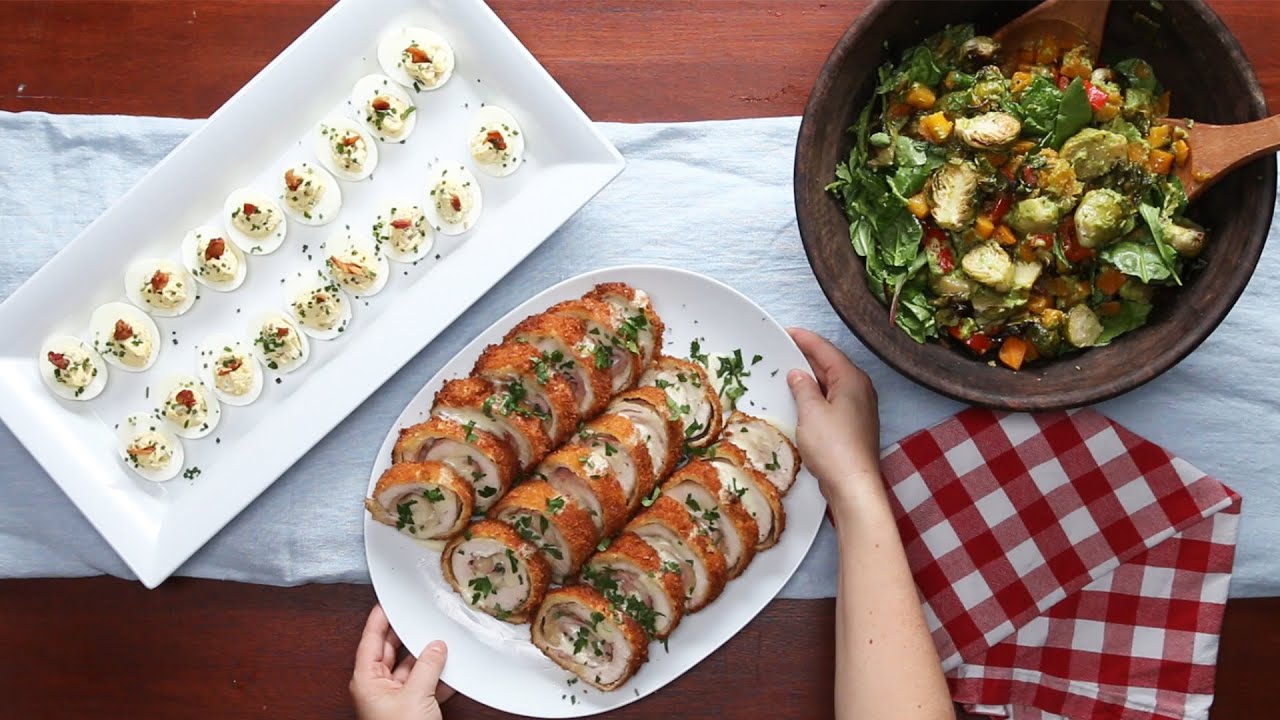

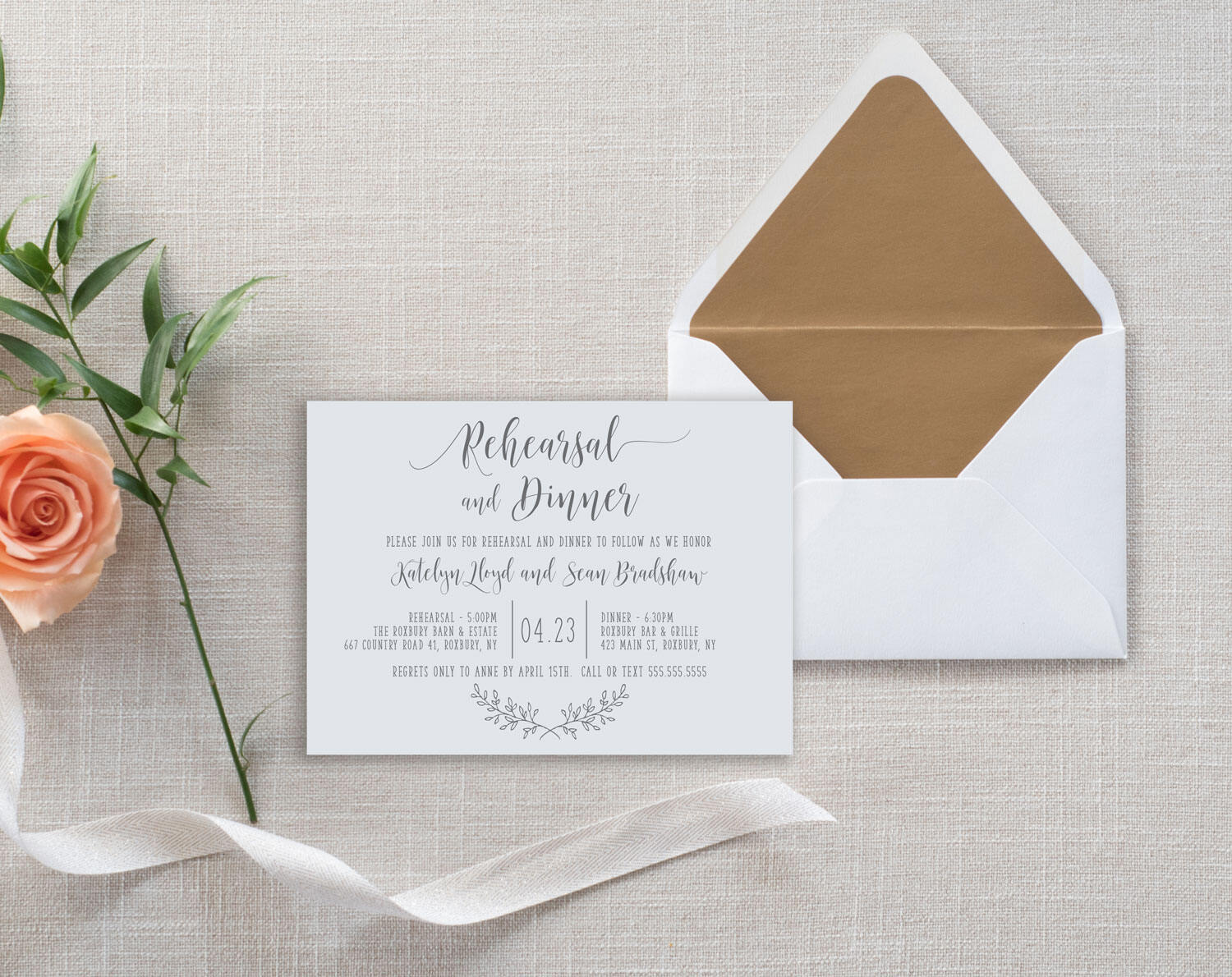


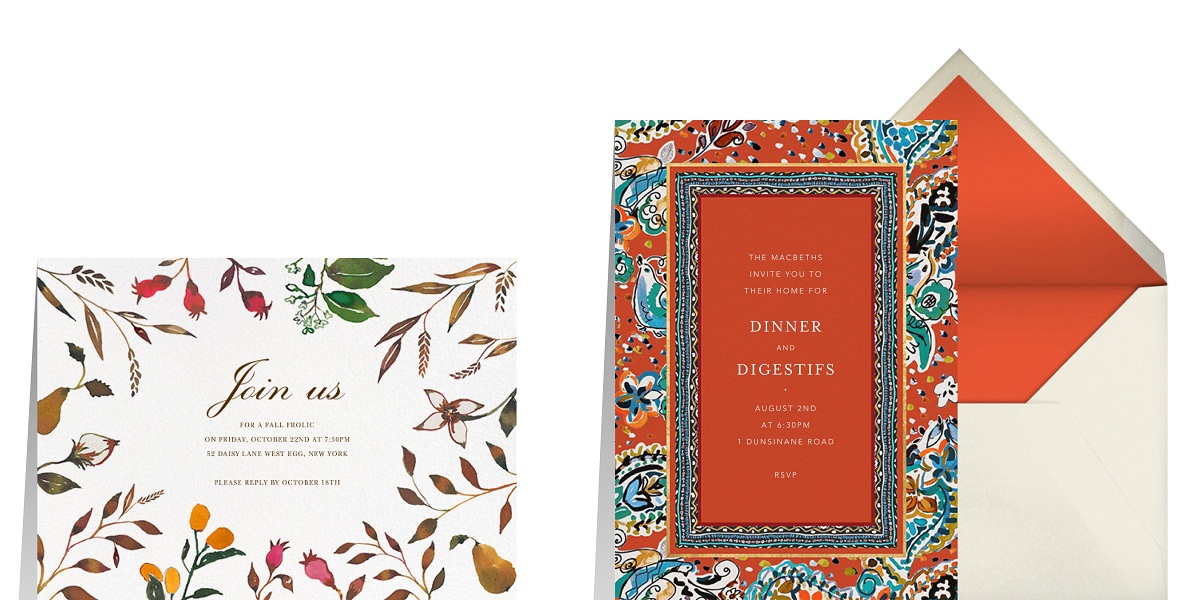
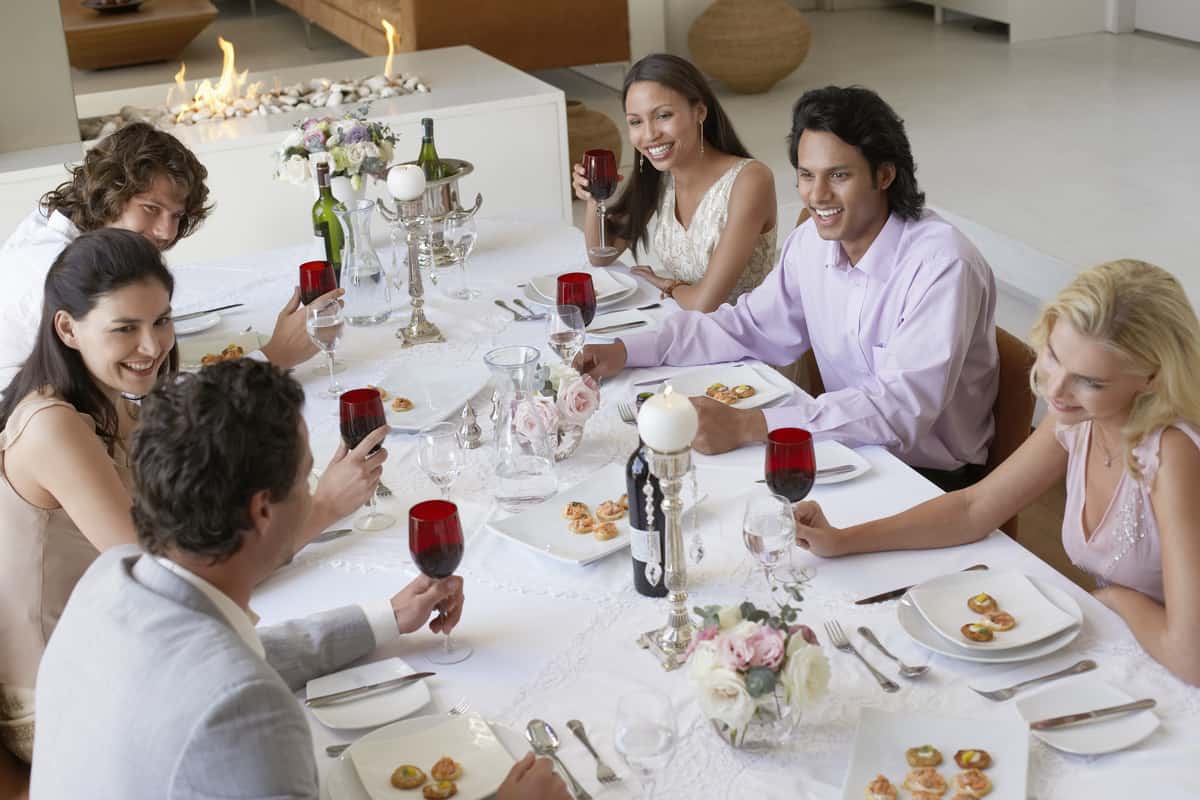
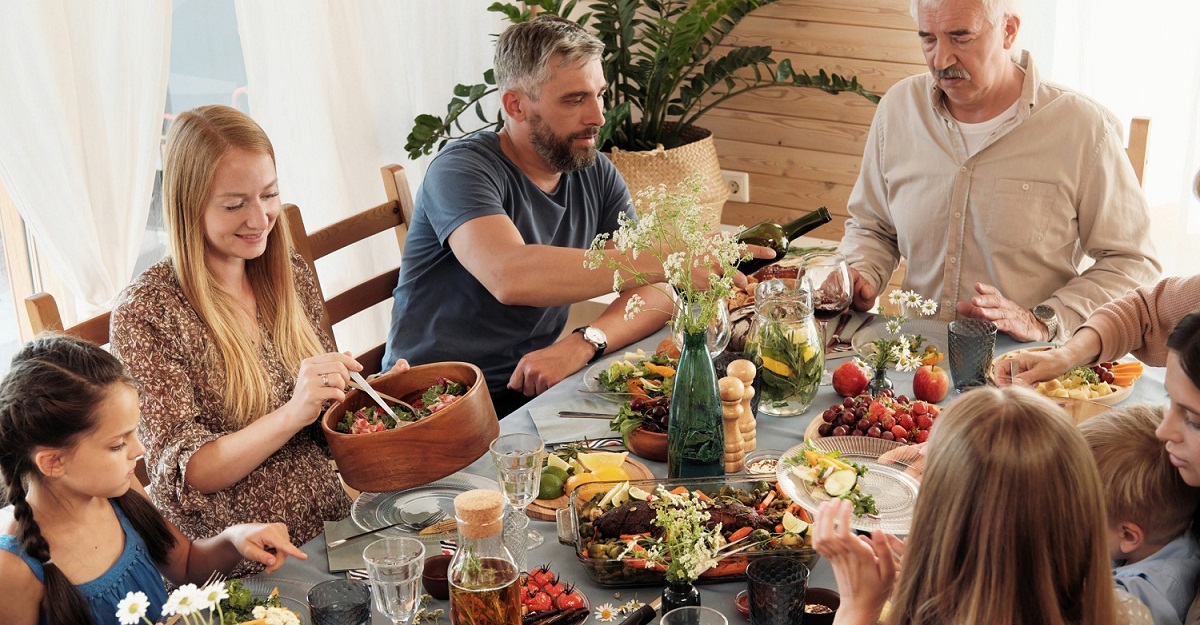
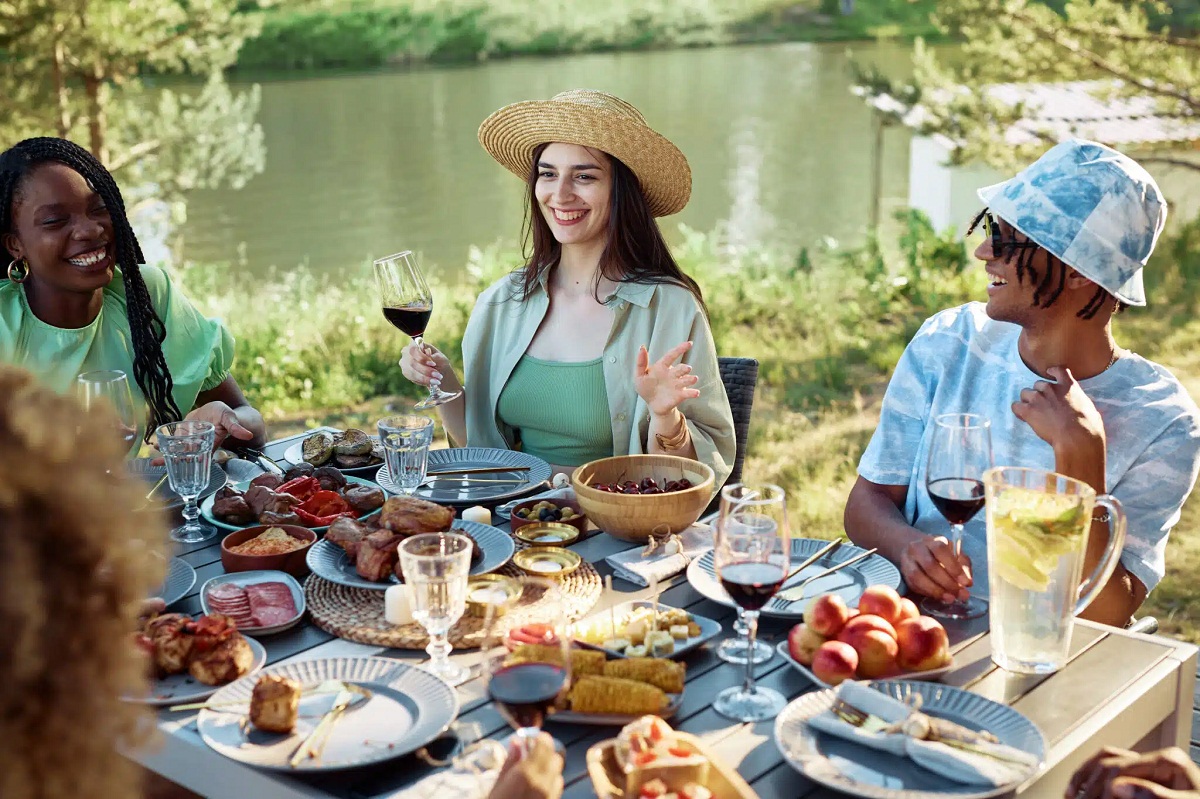
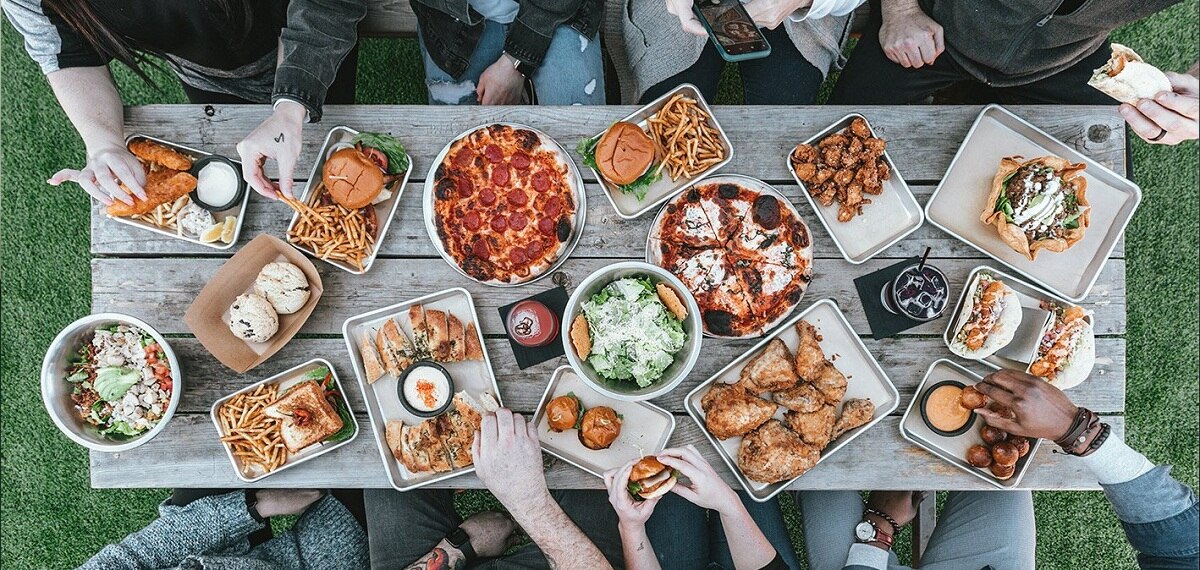
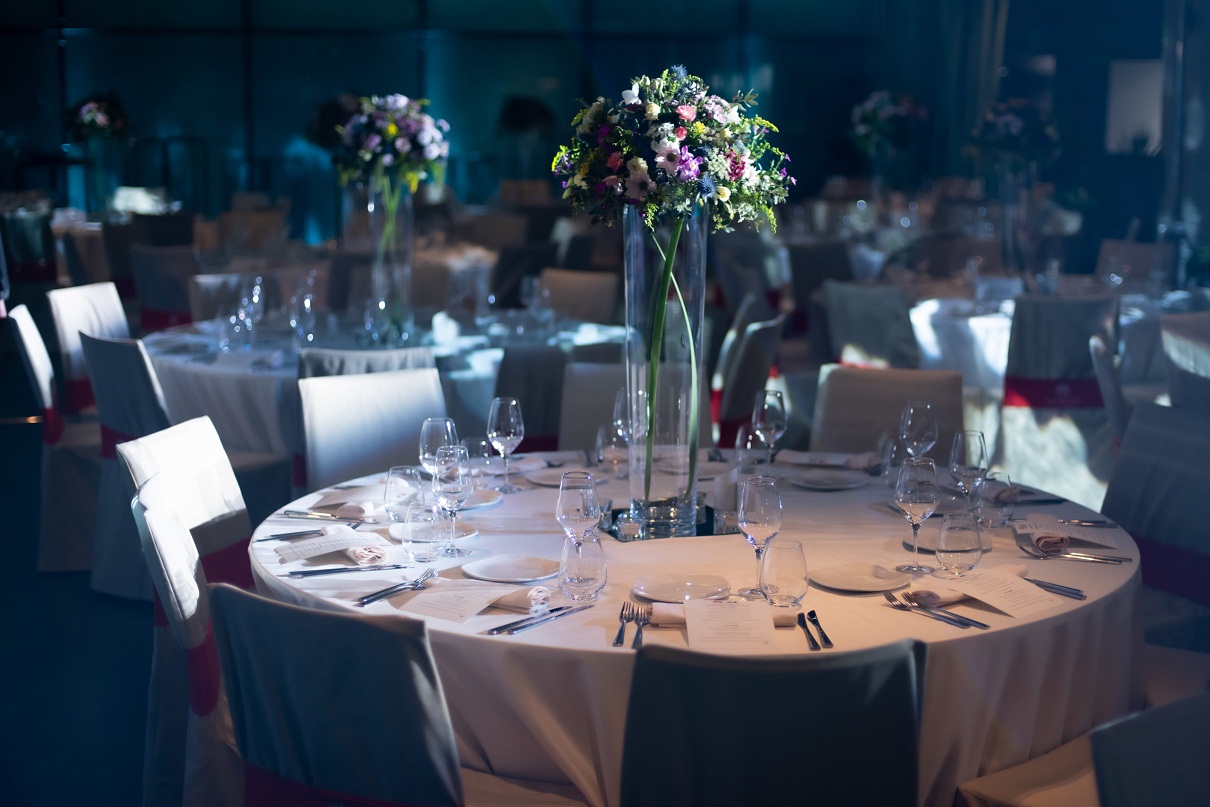

0 thoughts on “How To Host A Dinner Party”